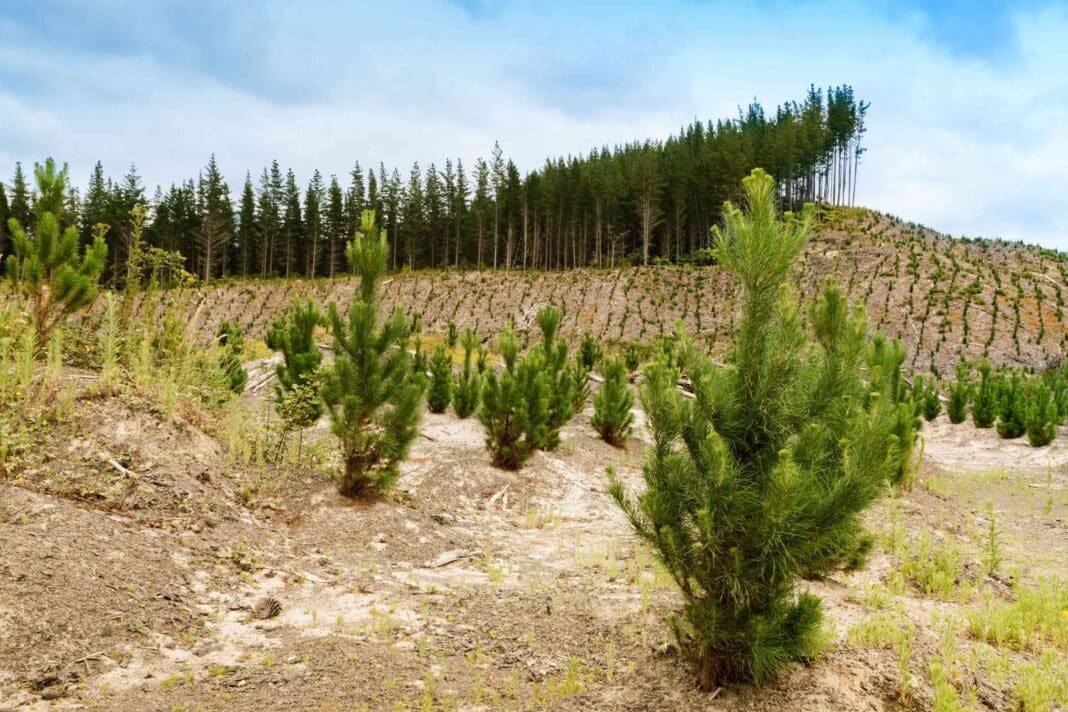New Zealand’s path to net zero is too reliant on low-cost forests, and its “no limits” approach to afforestation now leaves its carbon market “at risk” from over-investment at the expense of other solutions.
Consequently, the new Christopher Luxon-led government should consider reforming the country’s ETS, acting on the reforms proposed by the outgoing Chris Hipkins government – which would see a separate market established for offsetting, separate from the main ETS.
That is according to a new report published by the OECD, which said NZ is “almost unique” in allowing unlimited tree planting to meet climate emissions instead of actively slowing emissions.

According to the OECD, NZ’s current policy does not incentivise emitters to address the root cause of climate change – opting to offset and plant new trees rather than actively reduce emissions in production.
As a result, NZ’s tree planting reached an all-time high in 2022, topping more than 60,000 hectares, a 71% increase from the NZ government’s expected 35,000 hectares. The report notes that the driver in the surge in planting is the offset cost – $50.00 per tonne of CO2 – which is half the cost of adopting carbon reduction tech, which kicks in at $100.00 per tonne.
Consequently, NZ will soon be flooded with forestry credits, reaching a point in the 2030s when the ETS will have enough forestry credits to cover every carbon-producing industry.
“Drawing that to its natural conclusion,” the report said, for forests to be effective, “they need to remain in existence for as long as the CO2 – (potentially) hundreds of years.”
“If gross CO2 emissions continue, this would require every increase in plantings and land use change,” the report said, adding that the land would remain locked into forestry until carbon locked up in trees can be moved into another, more cost-effective sequestration option.

Aside from Kazakhistan, NZ is the only country that allows 100% carbon offsetting by forestry inside its ETS – with the OECD suggesting that slower-growing native forests could be tagged into longer-lived emissions, continuing to earn credits in the ETS.
Should a separate pricing scheme be green-lit, the report recommends free unit allocations that decline over time, allowing NZ farmers to continue earning credits for forestry-based carbon sequestration.
The proposed amendments
Last year the government released four options to reform the ETS, they included:
- Use existing levers to strengthen incentives for net emissions reductions, for example, reducing the number of NZUs sold through auction.
- Increase the demand for emissions units by allowing the Government and/or overseas buyers to purchase them.
- Strengthen the incentives for gross emission reductions by changing the incentives for removals.
- Create separate incentives for gross emission reductions and removals.
At the time, Wood Central reported that the most likely change, as assessed by officals, was to establish a whole new additional ETS market.
When it comes to the redesign of the permanent forest category, the previous government asked for consultation on the following:
- What forests should be allowed in the permanent forest category?
- How transition forests should be managed to ensure a successful transition best
- What rules will best maximise the benefits of permanent forests in the category?
- To learn more about the NZ ETS market and proposed changes, click on Wood Central’s special feature.







